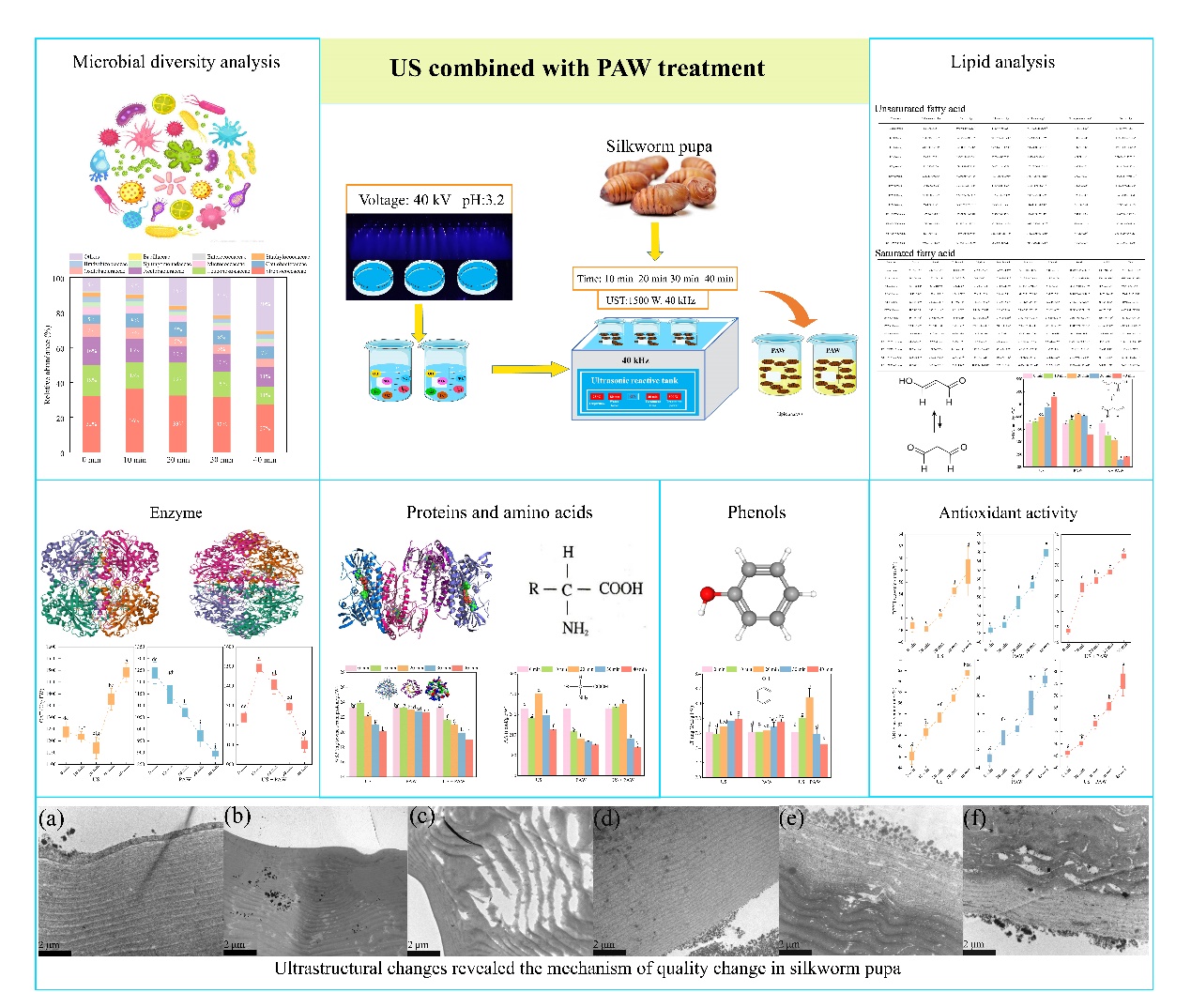Ultrasound combined with plasma-activated water treatment significantly improves the quality of silkworm pupae
Date:2024-06-20
Recently, the team of Processing and Functional Evaluation of Resource Insect Products at the Institute of Apicultural Research, Chinese Academy of Agricultural Sciences, comprehensively investigated the combined effects of ultrasound and plasma-activated water onsilkworm pupae:Physicochemical properties, microbiological diversityand ultra-structure. The work was published in Ultrasonics Sonochemistry.
Silkworm pupae, rich in proteins, lipids, vitamins, polyphenols,peptides, essential amino acids, and trace elements, are among the mostpromising alternative animal food sources and have been consumed byhumans for over 2,000 years.Despite this, silkworm pupae remain unpopular with consumers as a food item due to their high allergen content, microbial contamination, and unpleasant odour. Researchershave explored thermal techniques, such as pasteurization, hot air drying,and blanching, to inactivate spoilage enzymes and microorganisms andensure the safety and quality of silkworm pupae products. However,applying heat, even at moderate temperatures, can have detrimentaleffects on flavour, essential nutrients (lipid oxidation and functionalprotein inactivation), and vitamins. Moreover, it may lead to the production of harmful amines, aldehydes, and glycosides, posing a seriousthreat to human health. The ultrasound facilitates the deeper penetration of plasma-activated water into the silkworm pupae, allowing even a small amount of plasma-activated water to exhibit sterilizingand enzyme-inactivating effects while minimizing adverse impacts onthe quality of silkworm pupae.
This studyassessed the pre-treatment efficiency of ultrasound, plasma-activated water, and thecombination of plasma-activated water with ultrasound in microbial diversity of silkwormpupae; the impact of ultrasound, plasma-activated water, and plasma-activated water combined with ultrasound on thequality parameters (such as antioxidant capacity, enzyme activity, totalphenol content, and fatty acid content); and the mechanism of plasma-activated water combined with ultrasound byobserving and analyzing the micro-structure of silkworm pupae. The results of the microbial diversity analysis indicated that plasma-activated water combined with ultrasound treatmentsignificantly reduced the relative abundance of Streptococcaceae, Leuconostocaceae, and Acetobacteraceae. Micro-structural analysis demonstrated that the collapseof the internal structure of chitin in silkworm pupae facilitated the release of nutrients and flavour compoundsincluding fatty acids, water-soluble proteins, amino acids, phenolics, and volatile compounds. Furthermore, the increase in antioxidant capacity and the decrease in catalase activity and malondialdehyde contentconfirmed the mechanism of quality change. These findings provide new insights into the possible mechanism ofplasma-activated water combined with ultrasound to improve the quality of edible insects.
The study was supported by the National Key Research and Development Program of China (2023YFF1103800), National Natural ScienceFoundation of China (No. 31871861), China Agriculture Research System-Bee (NYCYTX-44-KXJ17), Science and Technology InnovationProject of Chinese Academy of Agricultural Sciences (CAAS-ASTIP-2015-IAR).
https://doi.org/10.1016/j.ultsonch.2024.106927
